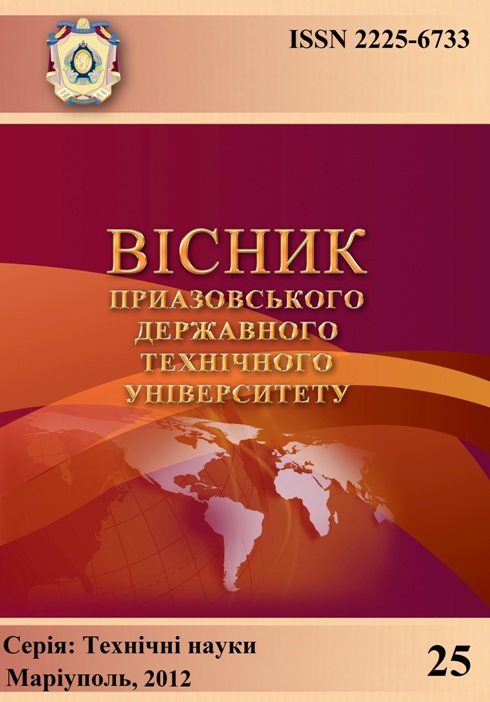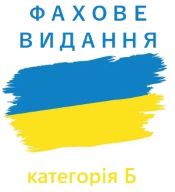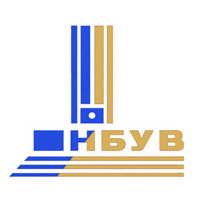Структурні особливості зварних з'єднань КССО сталі 10Г2ФБ, одержаних в різних термодеформаційних умовах
DOI:
https://doi.org/10.31498/2225-6733.25.2012.29466Ключові слова:
контактне стикове зварювання оплавленням (КСЗО), низьколегована сталь, мікроструктураАнотація
Досліджено вплив термодеформаційних параметрів при контактному стиковому зварюванні оплавленням труб зі сталі 10Г2ФБ на формування структури зварних з’єднань. Встановлено, що негативний вплив на в’язкість з’єднань, що отримані на типовому режимі, надає присутність в крупнозернистій структурі зони з'єднання і ЗТВ ділянок полігонального фериту і фериту з упорядкованою другою фазою. Зниження енерговкладання при зварюванні забезпечує формування в з'єднанні дрібнозернистою двофазної структури – МАК – «фази» в феритної матриці. Така структура забезпечує підвищення пластичних властивостей з’єднань
Посилання
Мазур И.И. Электроконтактная сварка трубопроводов: пути совершенствования / И.И. Мазур, О.М. Серафин, М.П. Карпенко // Строительство трубопроводов. – 1988. – №4. – С. 8-11.
Свод Правил сооружения магистральных газопроводов. СП 105-34-96. Утверждено РАО «Газпром» 11.09.1996 г. Москва, 1996.
Кучук-Яценко С.И. Контактная стыковая сварка непрерывным оплавлением / С.И. Кучук-Яценко, В.К. Лебедев. – Киев : Наукова думка, 1976. – 213 с.
Кучук-Яценко С.И. Влияние дефектов контактной стыковой сварки на прочность соединений при низких температурах / С.И. Кучук-Яценко, Г.В. Жемчужников, Б.И. Казымов // Автоматическая сварка. – 1980. – № 12. – С. 1-3.
Кучук-Яценко С.И. Контактная стыковая сварка трубопроводов / С.И. Кучук-Яценко. – Киев : Наукова думка, 1986. – 208 с.
Взаимосвязь микроструктуры с ударной вязкостью металла швов на трубной низколегированной стали / Д.П. Новикова [и др.] // Автоматическая сварка. – 1973. – №8. – С. 6-9.
Гривняк И. Металлографическое исследование мартенситно-аустенитной составляющей (МАС) металла ЗТВ высокопрочных низколегированных сталей / И. Гривняк, Ф. Матцуда // Автоматическая сварка. – 1994. – № 3. – С. 22-30.
Гривняк И. Свариваемость современных высокопрочных сталей / И. Гривняк // Сборник трудов междунар. конф. «Сварка и родственные технологии – в XXI век». – Киев. – Ноябрь 1998. – С. 41-55.
Matsuda F. An investigation on the behavior of M – A constituent in simulated HAZ of HSLA steel. – S. 1. (1990), 20 p. – (Intern Inst. of Welding; DOC: IX – B – 1591 – 90).
Особенности аргонодуговой обработки с подплавлением сварного соединения закаливающейся стали / В.М. Кулик [и др.] // Автоматическая сварка. – 2004. – № 3. – С. 16-21.
Атлас «Металлография железа»: Пер. с англ. Под редакцией акад. Ф.Н. Тавадзе. – М. : Металлургия, 1972. – Т. 2. 478 с.
О структурных составляющих металла шва на низколегированных сталях / А.М. Макара [и др.] // Автоматическая сварка. – 1967. – № 3. – С. 1-6.
Макара А.М. О структуре высокопрочных низколегированных швов / А.М. Макара [и др.] // Автоматическая сварка. – 1969. – № 6. – С. 11-15.
Yurioka N., Suzuki H and Oshita: Welding J., Vol. 62, №9, (1983), p. 143s – 153s.
Yurioka N.: TMCP steels and their welding. DOC.//WIX – 1739 – 94 rew. (1995). Welding in the world, Vol. 35, №5, (1995).
Guidelines for the classification of ferritic steel weld metal microstructural constituents using the light microscope // Welding in the world. – 1986. – 24, № 7/8 – P. 144 – 148.
Хауман В. Статическая прочность и механика разрушения сталей / В. Хауман. – М. : Металлургия, 1988. – 565 с.
##submission.downloads##
Як цитувати
Номер
Розділ
Ліцензія
Журнал "Вісник Приазовського державного технічного університету. Серія: Технічні науки" видається під ліцензією СС-BY (Ліцензія «Із зазначенням авторства»).
Дана ліцензія дозволяє поширювати, редагувати, поправляти і брати твір за основу для похідних навіть на комерційній основі із зазначенням авторства. Це найзручніша з усіх пропонованих ліцензій. Рекомендується для максимального поширення і використання неліцензійних матеріалів.
Автори, які публікуються в цьому журналі, погоджуються з наступними умовами:
1. Автори залишають за собою право на авторство своєї роботи та передають журналу право першої публікації цієї роботи на умовах ліцензії Creative Commons Attribution License, яка дозволяє іншим особам вільно розповсюджувати опубліковану роботу з обов'язковим посиланням на авторів оригінальної роботи та першу публікацію роботи в цьому журналі.
2. Автори мають право укладати самостійні додаткові угоди, які стосуються неексклюзивного поширення роботи в тому вигляді, в якому вона була опублікована цим журналом (наприклад, розміщувати роботу в електронному сховищі установи або публікувати у складі монографії), за умови збереження посилання на першу публікацію роботи в цьому журналі.









